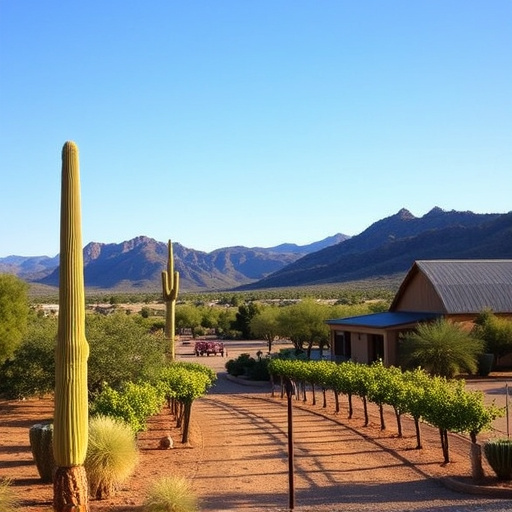In Southern Arizona's arid landscape, a thriving community of wineries cultivates rare grape varietals adapted to the desert climate, producing unique and distinctive wines. These wineries showcase humanity's resilience and innovation, employing sustainable practices like drip irrigation and rainwater harvesting. Their efforts enhance local tourism and position Southern Arizona as a must-visit destination for wine enthusiasts seeking exceptional, eco-friendly desert wines.
“Uncover the enchanting world of wine beyond conventional boundaries as we explore the unique art of cultivating rare grape varietals in desert climates. This article takes you on a journey to a southern Arizona winery, where winemakers defy expectations by embracing arid landscapes. We delve into the challenges and promises of desert wine production, offering a taster’s experience of rare varietals thriving in unexpected environments. Additionally, we shine a spotlight on sustainable practices that contribute to this remarkable craft.”
- Unveiling Unique Grape Varietals: A Southern Arizona Winery Perspective
- The Challenge and Promise of Desert Wine Production
- Rare Varietals: A Taster's Journey Through Arid Landscapes
- Sustainable Practices in Desert Winemaking: A Case Study
Unveiling Unique Grape Varietals: A Southern Arizona Winery Perspective
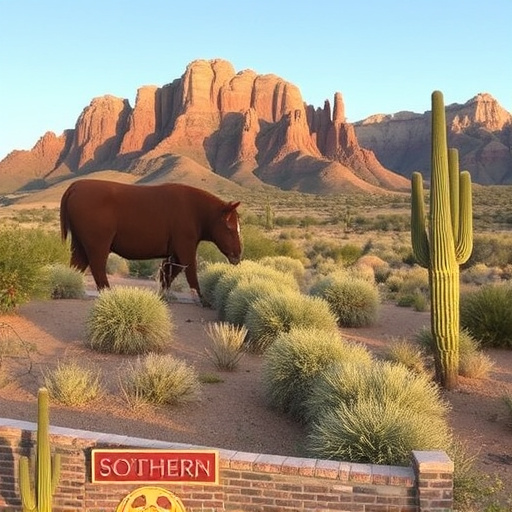
In the heart of Southern Arizona, nestled among the rolling hills and amidst the arid landscape, lies a vibrant community of wineries that have successfully cultivated an extraordinary array of grape varietals. These wineries are not just thriving but also revolutionizing the wine industry by showcasing rare and unique grapes that flourish in the region’s desert climate. The hot, dry conditions and high altitude create a crucible where specific varieties thrive, producing wines with distinctive flavors and aromas.
Southern Arizona winery experts have been instrumental in uncovering and promoting these hidden gems. They share their knowledge about navigating the labyrinthine choices of rare varietals, each with its own set of challenges and rewards. From gossamer-light whites to robust reds, these wineries offer a symphony of tastes that dance on the palate. Their work not only enhances local tourism but also ensures that folks from around the world can experience the indelible flavors that desert-grown grapes have to offer.
The Challenge and Promise of Desert Wine Production
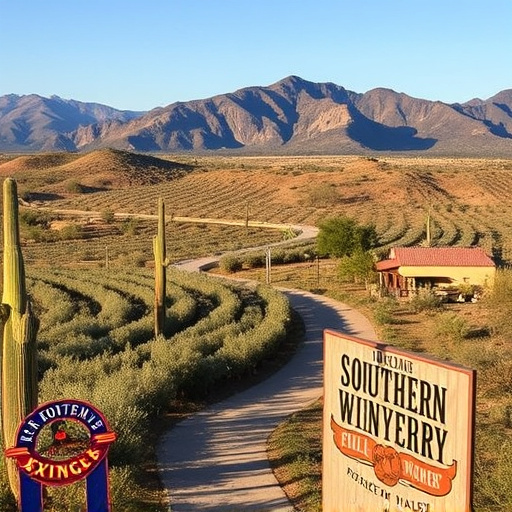
The challenge of cultivating grapes and producing wine in desert climates like Southern Arizona is a testament to humanity’s resilience and ingenuity. The extreme heat, low humidity, and distinct day-night temperature fluctuations pose significant obstacles for viticulturists. Yet, these conditions also offer a unique set of advantages. Desert varietals have developed natural adaptations to survive harsh environments, often resulting in remarkable resistance to diseases and pests. This hardiness translates into concentrated flavors and aromas in the grapes, which can produce distinct and rare wine styles.
Southern Arizona wineries are at the forefront of this movement, pioneering techniques to thrive in this challenging terroir. They employ innovative irrigation methods, carefully select drought-resistant grape varieties, and optimize vineyard management practices to harness the sun’s power while minimizing water usage. The promise of desert wine production lies not only in its ability to create unique, limited-edition vintages but also in its potential to contribute to a more sustainable and resilient viticultural future.
Rare Varietals: A Taster's Journey Through Arid Landscapes
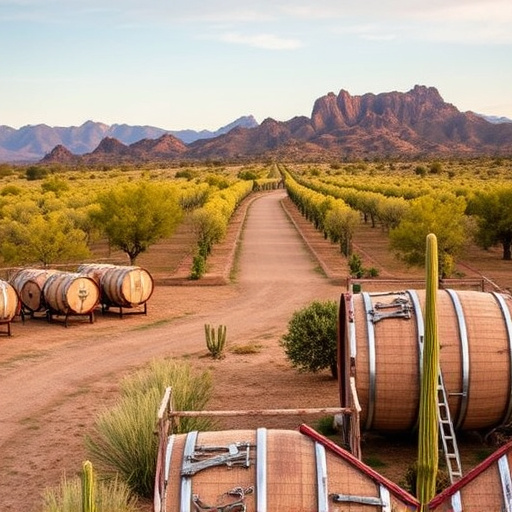
In the heart of Southern Arizona, amidst the sun-kissed landscapes and rugged terrain, lies a hidden gem for wine enthusiasts—a thriving southern Arizona winery dedicated to cultivating rare varietals that defy conventional viticulture. Here, winemakers embrace the challenges posed by the arid climate, transforming it into an art form that results in unique and exquisite wines. Every bottle tells a story of perseverance, innovation, and the enduring spirit of those who dare to explore the boundaries of wine production in extreme conditions.
Tasting these rare varietals is akin to embarking on a sensory journey through the desert’s enigmatic beauty. The wines showcase distinct flavors that reflect the terroir—a dance between the sun’s warmth and the cool desert breezes. From crisp, zesty notes that whisper of citrus and herbs to rich, complex aromas that hint at the region’s unique mineral profile, each sip reveals a story of survival and resilience. Southern Arizona’s winemakers are not just crafting wines; they are artisans who have mastered the art of conversation between grape and desert, creating experiences that resonate with tasters seeking something extraordinary.
Sustainable Practices in Desert Winemaking: A Case Study
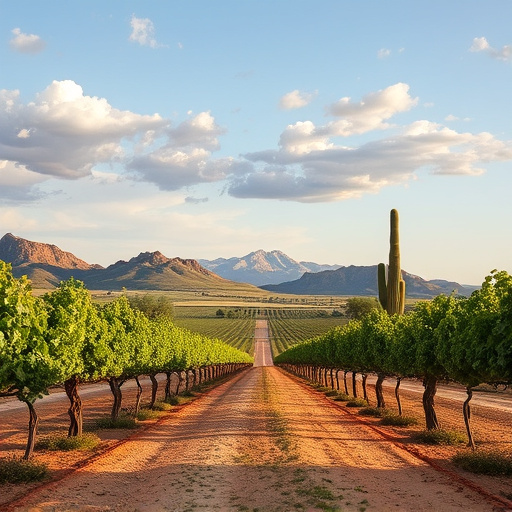
In the heart of Southern Arizona, wineries are pioneering sustainable practices while cultivating rare grape varietals that flourish in desert climates. These innovative producers are not just crafting unique and exquisite wines; they’re also redefining the boundaries of viticulture by embracing the challenges posed by arid environments. By implementing water conservation techniques, such as drip irrigation and rainwater harvesting, these southern Arizona wineries ensure minimal environmental impact while maximizing efficiency.
Moreover, their expertise in terroir lies in understanding how desert soils and microclimates enhance flavor profiles. This knowledge allows them to nurture rare grapes that might otherwise struggle outside traditional wine-growing regions. Through careful selection of grape varieties and innovative farming methods, these wineries are proving that sustainable desert winemaking is not only possible but also a vibrant, burgeoning art form.
In exploring the unique challenges and rewards of cultivating rare grape varietals in desert climates, particularly through the lens of Southern Arizona wineries, it’s clear that these arid landscapes offer distinct advantages for sustainable and innovative winemaking. By adopting eco-friendly practices detailed in our case study, producers are not only thriving but also contributing to a vibrant, niche market. The diverse flavors and stories behind each bottle reflect the resilience and beauty of these harsh environments, making desert wines a true treasure for connoisseurs worldwide. This journey highlights the potential for rare varietals to flourish in unexpected places, reshaping the global wine map one sip at a time.
